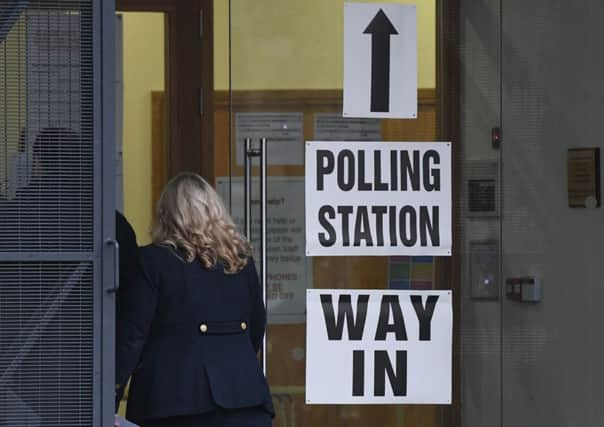Less electoral choice in NI as money squeezes out candidates


There has been a 21% drop in the number of candidates standing in the Province, which has already gone to the polls this year in an unscheduled Assembly election and could face a second Assembly poll before the year is out.
In 2015, 138 candidates contested the 18 seats. This time that has fallen to 109 candidates in the race.
Advertisement
Hide AdAdvertisement
Hide AdMost of the major parties are still contesting either every seat (Sinn Fein, the SDLP and the Alliance Party) or the vast bulk of seats (the DUP) on June 8.
However, the number of candidates from smaller parties or independents has fallen. Even the Ulster Unionist Party is only contesting 11 constituencies.
The Conservative Party had 16 candidates in 2015 – one of whom polled just 34 votes; this time they have seven, while the TUV put up 10 candidates last time but now is fielding just one.
Last week the TUV explicitly accepted that it was not in a financial position to contest most seats.
Advertisement
Hide AdAdvertisement
Hide AdAnnouncing that it was just standing one candidate, Jim Allister’s party said: “With the possibility of another Assembly election in the coming months we have made a strategic decision to preserve our resources”.
Steven Agnew, leader of the Green Party in Northern Ireland, said there was “no doubt it has been challenging” to fund so many elections but that his party had through “sensible long-term planning” been able to increase the number of candidates it was standing this time from five to seven.
The major electoral expenses involve literature, posters and party election broadcasts.
Even finding the £500 deposit to stand (which allows a candidate to post one item of literature for free to every elector) would mean an expenditure of £9,000 if a party contested all 18 constituencies.
Advertisement
Hide AdAdvertisement
Hide AdThis time there has been an increase in the proportion of female candidates.
In 2015, less than a quarter (24%) of candidates in Northern Ireland were women. That has now climbed to 33%. But the two main unionist parties are overwhelmingly male candidates – the DUP has two women candidates and the UUP has one.